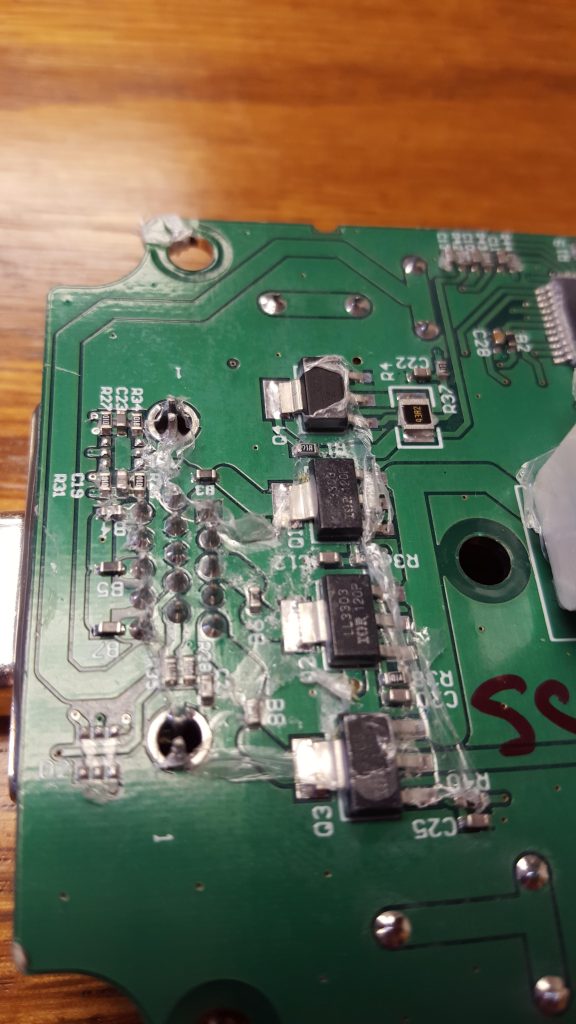Common Parylene Problems
Posted by Sean Horn
Friday, July 15, 2016 7:30
@ 7:30 AM
In addition to cracking, a range of associated issues may interfere with successful coating of parylene films. Because it is applied via CVD, parylene generates a structurally continuous film covering a PCB or similar assembly. In CVD, the interaction of vapor-phase chemical reactants formulate a non-volatile solid film on a substrate, useful for a variety of applications like corrosion resistance, erosion defense, and high temperature protection.
Thus, in contrast to competing wet coating processes, parylene exhibits no liquid problems like capillary flow or meniscus. Neither will it
- bridge across substrate features,
- pool in lower areas of the assembly’s topography, or
- pull away from the component’s edges.
This combination of application advantages is instrumental in establishing parylene’s overall superiority compared to such liquid coatings as acrylic, epoxy, silicone and urethane. Nevertheless, parylene films are confronted by several failure mechanisms that need to be managed if coating processes are to be successfully implemented.
Issues that Complicate Parylene Coating
Contaminants: A clean surface is necessary to assure successful application and performance of parylene films. Contaminated surfaces do not support adhesion and are conducive to delamination. Visually undetectable ionic contaminants are capable of short-circuiting the assembly beneath the conformal film, as well as instigating corrosion that can damage the parylene coating. Most ionic contaminants can be removed by cleansing with purified water. Nonionic contaminants are visible along the assembly’s surface prior to parylene application. Because their presence attracts debris and foreign matter, they limit parylene adherence, causing pealing, cracking or other performance dysfunction. They’re generally organic compounds like greases, oils or hand lotion, although rosin and silicone are also non-ionic. They generally can be removed with solvents and surfactants.
Delamination: Proper adhesion of parylene to the substrate surface is critical to its role as a conformal coating. One problem can be parylene’s underlying chemical structure, which can interfere with dependable surface interface, constraining adhesion with some materials. The resulting delamination separates the conformal coating from the substrate, producing a poor, unacceptable finish characterized by torn, unattached, and non-conformal coating. Even where surface exposure is incomplete, uncovering even some segment of the assembly negates the objective of conformal coating. Removal of masking materials, materials incompatibility, or unclean substrate surfaces may instigate delamination and subsequent lack of parylene adhesion. Appropriate coordination between the grade of parylene coating and the substrate material generates reliable adhesion and lamination. In these cases, altering either the coating type or modifying the surface energy better assures adherence. Working with a parylene type maintaining materials’ compatibility with the substrate and displaying applicable moisture impermeability is important, as is surface cleanliness. The objective is transforming the interaction of surface energies so they better support adhesion.
 Limited throughput: The parylene manufacturing process is valuable because of: 1) the quality of coatings it generates and 2) it is exceptionally controllable and repeatable, delivering extremely consistent results from batch-to-batch. However, CVD is also time- consuming and generally confined to small-batch production, which can vary between 8 – 24 hours, despite smaller batch-size. Deposition chambers are somewhat costly and tend to be physically small, reducing total quantity of product coated during any single coating session. Extreme coordination between the coating service’s work schedule and that of its customers is essential to limit production/delivery delays.
Limited throughput: The parylene manufacturing process is valuable because of: 1) the quality of coatings it generates and 2) it is exceptionally controllable and repeatable, delivering extremely consistent results from batch-to-batch. However, CVD is also time- consuming and generally confined to small-batch production, which can vary between 8 – 24 hours, despite smaller batch-size. Deposition chambers are somewhat costly and tend to be physically small, reducing total quantity of product coated during any single coating session. Extreme coordination between the coating service’s work schedule and that of its customers is essential to limit production/delivery delays.
Masking/prep: Although directed to targeted assembly areas by the CVD process, gaseous parylene can spread to non-targeted parts of the substrate. Assuring coating does not adhere to inappropriate sections can require labor intensive masking and preparation that further retard completion of production procedures.
Outgassing: The gaseous emission from a processed layer of coating film exposed to either heat or reduced air pressure, or both. Fortunately, Parylene has very low levels of outgassing.
Solder joint defects: Depending on their properties and application processes, conformal coatings can increase assembly solder joint fatigue; parylene can increase solder joint fatigue by about a factor of three, if improperly applied to the component.
Tin whiskers: The growth of spikey, whisker-like protrusions along the surfaces of metal components, believed to be encouraged by mechanically and thermally-induced stresses. Responsible for assembly arcing and short-circuits. Although parylene is very effective in limiting tin whisker growth, the condition can develop if film application is inadequate.
Weak metal adhesion: Parylene adhesion to noble metals such gold, silver or stainless steel is poor. This is a problem, for example, because gold’s superior conductivity properties make it a common element in many of today’s PCBs. Although several methods of adhesion promotion can significantly enhance parylene’s metal adhesion, they generally increase costs substantially because they are either labor-intensive or require specialized materials to generate desired product outcomes.
Summary
Parylene’s overall superiority as a conformal coating is verified by both the literature and practical application. However, its performance efficiency can be critically effected by the conditions discussed above. Proper parylene type and application of coating thicknesses appropriate to the particular assembly, its materials and uses, can significantly eliminate these problems.
To learn more about common parylene coating problems and how to prevent them, download our whitepaper:
{{cta(‘67972768-ab7a-4367-83ee-db9ddf93913c’)}}
Comments
Homepage 4/17/2020. 10:17:10 AM
... [Trackback] [...] Informations on that Topic: blog.paryleneconformalcoating.com/whats-the-difference-between-potting-and-conformal-coating/ [...]

londondrugscanada.bigcartel.comlondon-drugs 4/17/2020. 10:17:10 AM
cialis uk https://londondrugscanada.bigcartel.com/london-drugs This is nicely expressed. !